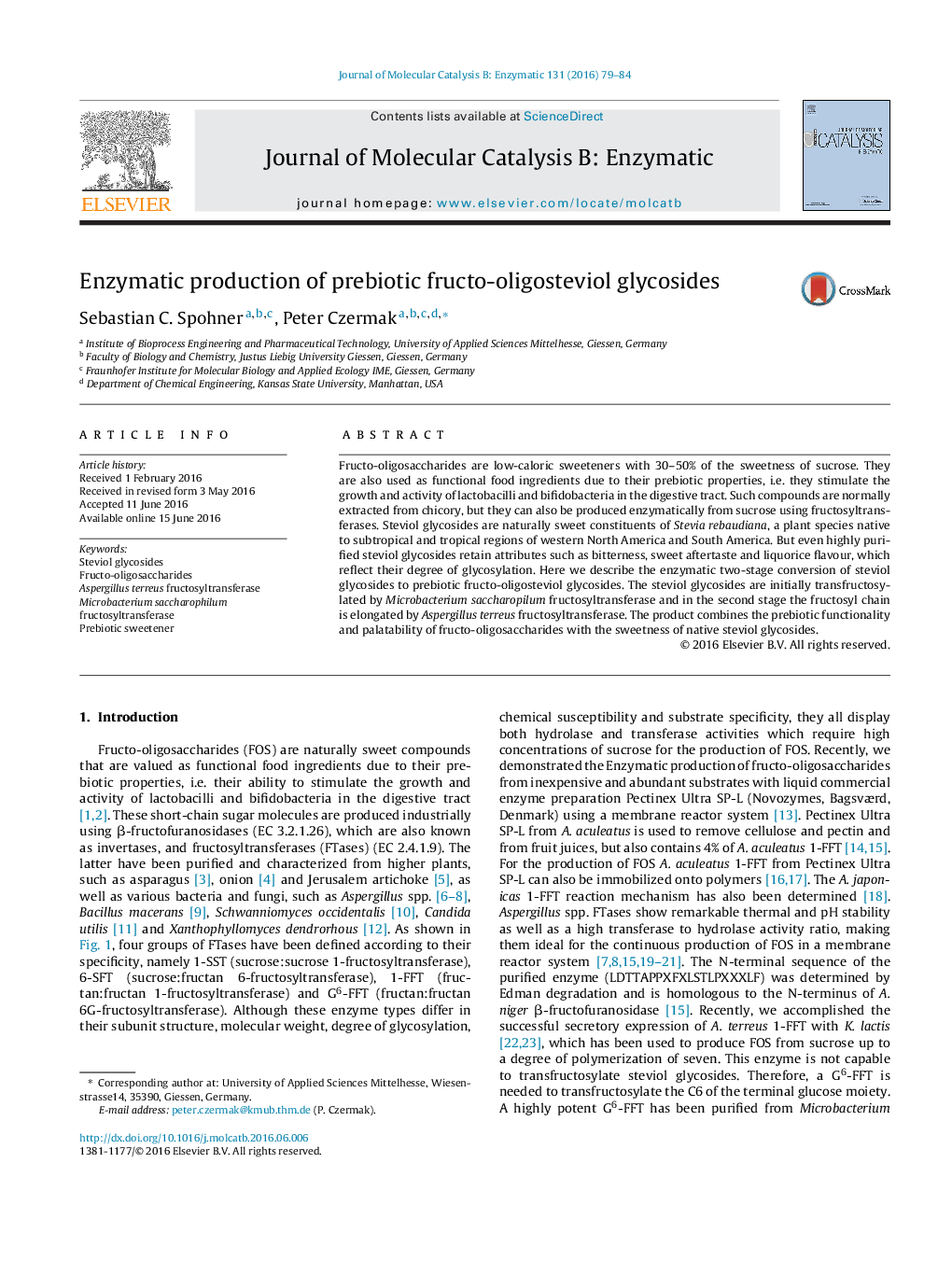| Article ID | Journal | Published Year | Pages | File Type |
|---|---|---|---|---|
| 69463 | Journal of Molecular Catalysis B: Enzymatic | 2016 | 6 Pages |
•A novel recombinant fructosyltransferase lacking beta-glucosidase activity is used in the conversion of steviol glycosides.•A way for regioselective addition of sugar moieties to steviol glycosides with sucrose as donor is described.•The production of a novel prebiotic sweetener is presented.
Fructo-oligosaccharides are low-caloric sweeteners with 30–50% of the sweetness of sucrose. They are also used as functional food ingredients due to their prebiotic properties, i.e. they stimulate the growth and activity of lactobacilli and bifidobacteria in the digestive tract. Such compounds are normally extracted from chicory, but they can also be produced enzymatically from sucrose using fructosyltransferases. Steviol glycosides are naturally sweet constituents of Stevia rebaudiana, a plant species native to subtropical and tropical regions of western North America and South America. But even highly purified steviol glycosides retain attributes such as bitterness, sweet aftertaste and liquorice flavour, which reflect their degree of glycosylation. Here we describe the enzymatic two-stage conversion of steviol glycosides to prebiotic fructo-oligosteviol glycosides. The steviol glycosides are initially transfructosylated by Microbacterium saccharopilum fructosyltransferase and in the second stage the fructosyl chain is elongated by Aspergillus terreus fructosyltransferase. The product combines the prebiotic functionality and palatability of fructo-oligosaccharides with the sweetness of native steviol glycosides.
Graphical abstractFigure optionsDownload full-size imageDownload as PowerPoint slide
